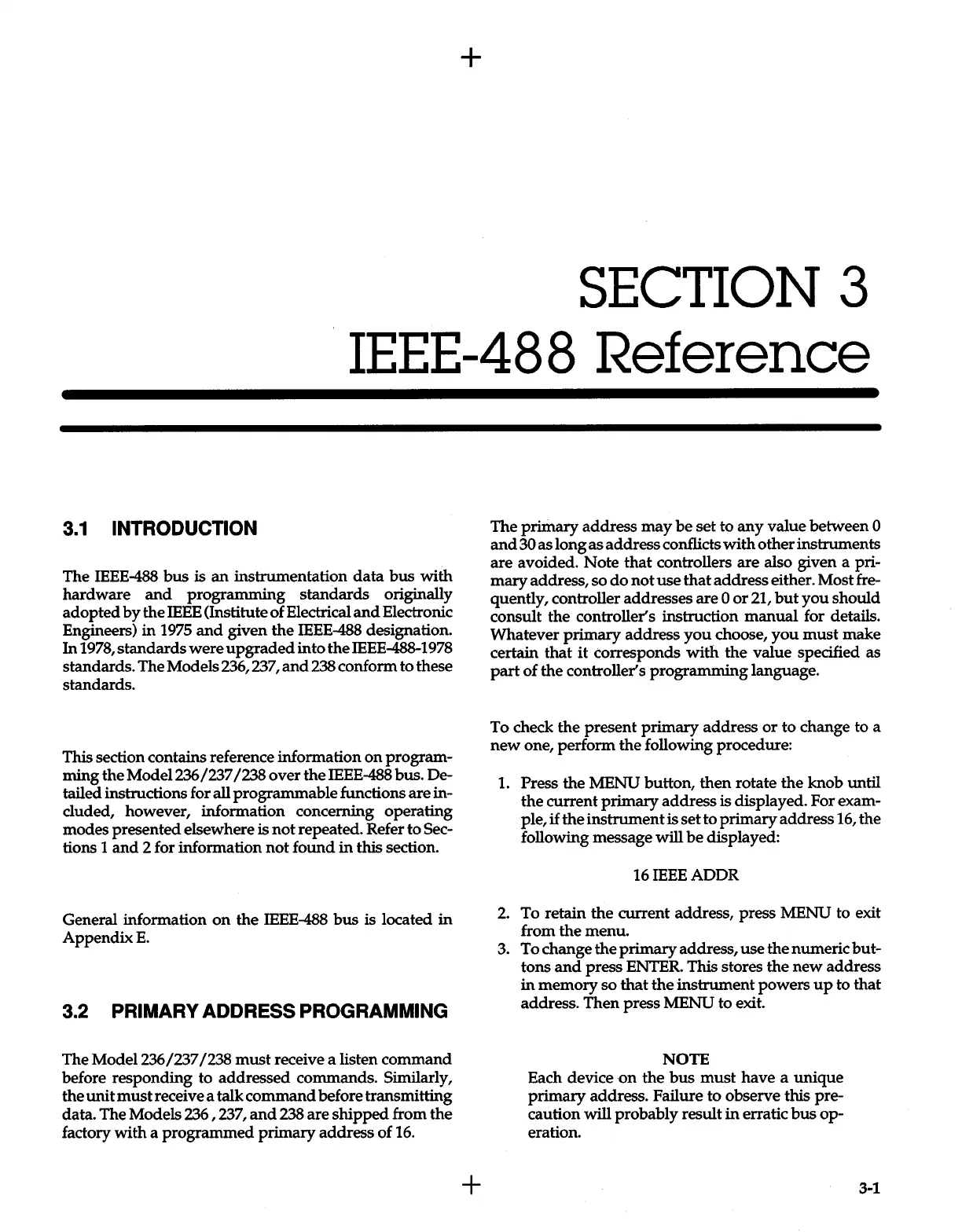+
SECTION
3
IEEE-488 Reference
3.1
INTRODUCTION
The
IEEE-488
bus
is
an
instrumentation data bus with
hardware
and
programming standards originally
adopted
by
the
IEEE
(Institute of Electrical
and
Electronic
Engineers) in
1975
and
given the
IEEE-488
designation.
In
1978,
standards were upgraded into the
IEEE-488-1978
standards. The Models
236, 237,
and
238
conform to these
standards.
This
section contains reference information on program-
ming the Model236 /237/238 over the
IEEE-488
bus. De-
tailed instructions for all programmable functions are in-
cluded, however, information concerning operating
modes presented elsewhere
is
not
repeated. Refer to
Sec-
tions 1
and
2 for information not found in this section.
General information
on
the
IEEE-488
bus
is
located
in
Appendix
E.
3.2 PRIMARY ADDRESS PROGRAMMING
The Model236/237 /238
must
receive a listen command
before responding to addressed commands. Similarly,
the unit must receive a talk command before transmitting
data. The Models 236,
237,
and
238
are shipped from the
factory with a programmed primary address of
16.
+
The primary address
may
be set to
any
value between
0
and
30
as long as address conflicts with other instruments
are avoided. Note that controllers are also given a pri-
mary address, so
do
not
use that address either. Most
fre-
quently, controller addresses are
0
or
21,
but
you
should
consult the controller's instruction manual for details.
Whatever primary address
you
choose,
you
must
make
certain that it corresponds with the value specified as
part
of the controller's programming language.
To check the present primary address
or
to change to a
new one, perform the following procedure:
1.
Press the MENU button, then rotate the knob until
the current primary address
is
displayed. For exam-
ple,
if
the instrument
is
set to primary address 16, the
following message
will
be displayed:
16IEEEADDR
2.
To retain the current address, press MENU to exit
from the menu.
3.
To change the primary address, use the numeric but-
tons
and
press ENTER.
This
stores the new address
in memory so that the instrument powers
up
to that
address. Then press MENU to exit.
NOTE
Each device
on
the
bus
must
have a unique
primary address. Failure to observe this pre-
caution
will
probably result
in
erratic bus op-
eration.
3-1
